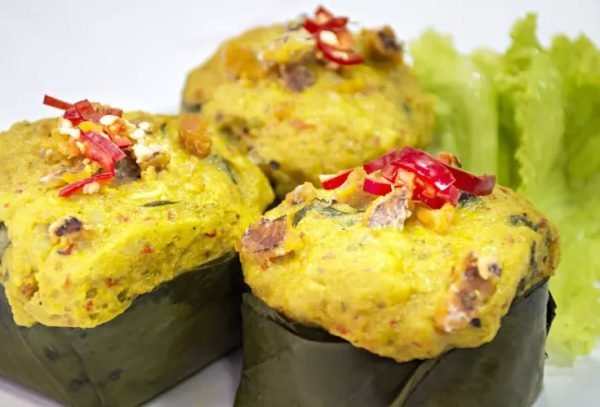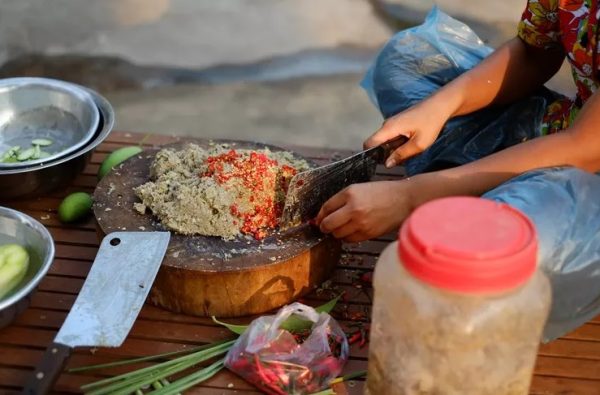Dinner in Phnom Penh or Siem Reap, and you’ll discover the multiple influences that literally flavor Cambodia’s food: Chinese noodle dishes, French baguettes, and Indian curries jostling with local specialties like amok. Cambodia’s abundance of freshwater lakes, rivers, and streams puts fish at the forefront of any Khmer meal, with local herbs and spices like garlic, shallots, galangal, and lemongrass rounding out the flavors. Boiled rice, of course, is a staple food for all hours of the day.
Amok
Take freshwater fish, dice its flesh and steam it with coconut milk, eggs, prahok, and a local spice paste called kroeung and you’ll get amok. This curry-like classic Khmer meal that you can enjoy at home kitchens and prestigious restaurants alike.

Traditional amok is made with snakehead fish, catfish, or even river snails—but thanks to tourist demand, chicken and vegetarian amok can now be found throughout the country. High-end amok is steamed like a mousse in a banana-leaf cup, but home-cooked amok tends to have a soupier consistency.
Prahok
Fermented fish paste is not unique to Cambodia, but prahok tastes (and smells) like it’s in a league of its own. To make prahok, crushed fish flesh is exposed to the sun, salted, then fermented in massive clay jars for up to three years. A little goes a long way—it adds a distinct flavor to many meat and vegetable dishes.

Prahok is a key ingredient in dishes like amok and a pork dip called prahok ktis, where the condiment is mixed with minced pork, coconut milk, and spices. Provincial Khmer men often make prahok ktis to ingratiate themselves with their mothers-in-law!
Samlor Korkor
A one-pot soup dish that combines catfish, pork, prahok, and the spice paste called kroeung, samlor korkor is found all over the country, thanks to its use of seasonal, local ingredients and complex flavors. The kroeung combines indigenous herbs and spices like turmeric, lemongrass, and galangal while the vegetables used can include green papaya, eggplant, and baby corn. Samlor korkor’s soup base is usually thickened with toasted rice.

The disparate ingredients help give the dish its name— korkor is Khmer for “mix things together.” Cambodians love to eat samlor korkor hot, with rice or on its own.

